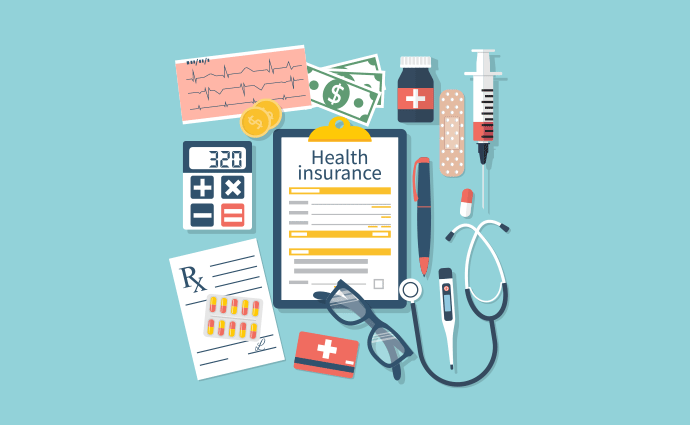Aligning the Healthcare Revenue Cycle with Patient Experience
Implementing self-service technology and giving accurate price estimates is key to improving the patient experience while ensuring a smooth revenue cycle.

Source: Thinkstock
- Improving a patient’s financial experience is key to healthcare revenue cycle management success, according to the Senior Regional Director of Revenue Cycle at Ascension Healthcare.
“Moving into the future, we need to focus more intentionally on the patient experience. Historically, patient experience often has not been top of mind. Revenue cycle is keen to focus on the KPIs and collecting the payments, which is important to sustaining our mission,” Andrew Gwin recently told RevCycleIntelligence.com.
“But we also have one of the most important opportunities to have positive interactions with patients,” he continued. “We are the ones who usually interact first with the patient, whether through scheduling or registration, and we generally are the last department in the organization to interact with the patient, through the billing and collections process.”
Traditionally, the revenue cycle strictly monitors the flow of money in and out of a healthcare organization. But the revenue cycle is in a unique position to also influence the patient experience.
The revenue cycle hinges on the patient. The cycle starts when a patient registers and makes an appointment with a provider, and it ends when the patient pays their financial responsibility after their insurance company reimburses the provider.
READ MORE: Preparing Providers for the Healthcare Consumerism Shift
Some patients arguably spend more time interacting with revenue cycle management staff than clinicians.
Yet, the focus for most hospital CFOs and revenue cycle directors is how to boost the bottom line, not improve the patient’s financial experience.
But that is going to have to change, contended Gwin. Hospitals and health systems should be identifying ways they can align their revenue cycle processes with consumer demands because ultimately improving the patient financial experience will boost the bottom line.
With the increasing popularity of high-deductible health plans, patient financial responsibility is increasing. Between 2016 and 2017 alone patients saw an 11 percent increase in average out-of-pocket costs, according to a TransUnion Healthcare study.
As patients take on greater responsibility for their medical costs, hospitals are finding their revenue sources shifting. Total hospital revenue attributable to patient financial responsibility after insurance increased 88 percent from 2012 to 2017, meaning hospitals must rely more on patient collections to obtain complete payment for services.
READ MORE: 4 Key Ways to Improve Healthcare Revenue Cycle Management
Patients have more skin in the game when it comes to their healthcare costs. And hospitals and health systems need to make sure their financial processes align with patient needs to ensure the revenue cycle functions smoothly.
To improve the healthcare revenue cycle in the age of health consumerism, Gwin advises hospitals and health systems to implement self-service technologies for everything from patient registration to payment collection.
Making the front-end more consumer-friendly
Technology has come a long way. Consumers can now reserve a table at a restaurant through a smartphone app, pay their credit card bills on a secure website, and easily compare products to ensure they get the best deal.
When it comes times to visit the doctor, however, patients have significantly less technological options.
Ninety percent of healthcare leaders in a recent Kaufman Hall survey identified improving consumer-centricity as their top organizational priority in 2018. Yet, the consulting firm only considered eight percent of respondents as top performers when it came to actually implementing innovative and effective consumer-centric strategies.
READ MORE: Implementing Value-Based Healthcare Revenue Cycle Management
The majority of respondents fell into the bottom two quartiles.
Investing in self-service technologies that allow patients to register online and make appointments in one click is how healthcare organizations can align their revenue cycle with the patient experience, Gwin explained.
“Technology enhancements that the industry is looking for right now and is partnering with vendors such as R1 to develop, whether through R1's proprietary technology or through other partnerships, is around self-scheduling,” he said. “How do we make it easier for patients to access our services electronically, so that they don't have to contact us?”

“Online pre-registration is another technology-supported service healthcare organizations should be focused on right now,” he added.
Self-service tools will transform healthcare into a more retail-like experience. But the tools need to integrate with existing revenue cycle management systems for them to be truly effective for the provider, warned Gwin.
“There are scheduling products on the market today, but some of those are scheduling requests that are not necessarily integrated into our systems, so they require feedback from the organization to say if the appointment is confirmed or available,” he pointed out. “We are incorporating technology that is true self-scheduling and integrates the physician order, so that it all ties together in the physician office.”
Similarly, self-service tools for registration should communicate with the hospital’s existing registration system to meaningfully change the patient financial experience.
“A lot of organizations have online pre-registration, but oftentimes it's just a web-based form that gets sent to an individual in an organization. There's not always integration into the registration system,” he stated.
“What we are working to develop, which has been more prevalent on the ambulatory side, is allowing patients to pre-register online on mobile devices,” he added. “So as soon as we schedule their appointments, we can push their pre-registration information to them electronically for them to review and confirm, instead of having them fill out all their information, which is frustrating for patients. They want to be able to just give you updates or changes. We will be able to show patients their current information, so they only have to make updates as necessary.”
Enabling patients to take control of some front-end revenue cycle management functions will help to streamline the revenue cycle and ensure accurate information for medical billing on the back-end.
Aligning billing and collections with healthcare consumerism
With patients owing more out-of-pocket costs, hospitals and health systems should also borrow billing and collection strategies from the retail industry.
First and foremost, hospitals and health systems should be educating their patients about their financial responsibility before they even bill the patients, Gwin advised.
Consumers know the price before they purchase services or items from the majority of other industries. As patients start to owe more money to healthcare providers, understanding the price of a service or appointment prior to receiving care will be critical to boosting patient collections.
“As part of that process, industry experts hope to be able to share with the patient their financial estimate, so they know what to expect when they come in,” he said. “Hopefully, this prompts them to pay in advance through point-of-service collections. It is all about educating patients on their responsibility.”
But hospitals need to be giving patients meaningful price information. In healthcare, though, what constitutes meaningful for patients has not always been clear.
For example, CMS recently finalized a requirement for hospitals that mandates the facilities publish their chargemaster prices online to inform consumers about healthcare prices.
However, Gwin, along with other provider groups and advocates, argue that chargemaster prices do not truly help patients understand their financial responsibility because few patients ever pay the actual price for healthcare.
“CMS is making an important effort to advance this concept, but its requirement that hospitals publish a chargemaster list doesn't really drive the consumer to make the right decisions because the chargemaster doesn’t reflect what any particular patient ends up paying,” Gwin explained. “So there is still work to be done in this area.”
Technology that allows hospitals and health systems to pull actual patient financial estimates will be key to improving healthcare price transparency, he elaborated.
“Today, the healthcare industry is able to use some of the R1 technology to come up with a patient estimate that is tied to our actual contracts, so we know what we expect to be paid based on our contract modeling. We can then pull in the patient's benefits to provide them with a pretty accurate estimate,” he said.
“We are trying to make that same type of technology patient-facing on our websites, so patients can access that themselves before they've even scheduled an appointment,” he added. “Instead of price shopping a chargemaster price, they can actually get an estimate based on their specific payer information and get to that level of detail that we would normally provide once you've been scheduled and gone through the registration process. That's critical in this new pricing transparency world.”
Online bill pay is another back-end revenue cycle management strategy that will be vital to success in a consumer-centric healthcare industry, Gwin continued.
Over one-half of the 1,000 patients recently surveyed by HIMSS Analytics and Waystar said they want to pay their medical bills like they do for other bills – online.
But almost all of the 900 financial executives from hospitals, health systems, and outpatient facilities also surveyed reported that their organizations still bill patients using paper statements.
Hospitals and health systems understand that they need to implement online patient collection tools to ensure timely and full payment from patients.
However, implementing online bill pay is just the first step, Gwin explained.
“How do we transform that experience? To me, that means being a one-stop shop by giving the patient all the options at their fingertips electronically so they can manage their account,” he said.
“That means guarantor-level billing, where they can see their family's statements and be able to pull in their other family members into one monthly bill, set up payment arrangements online themselves, or patient financing options if they have a need for that, and controlling the online process themselves versus just making one-time payments on single accounts, like most technologies do today,” he continued.
Hospitals are relying on patients almost as much as their payers for revenue collection. Ensuring that revenue cycle management processes take the patient experience into account will be vital to capturing full payment for services delivered.
